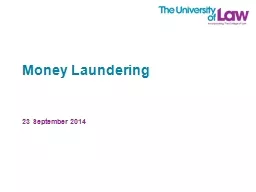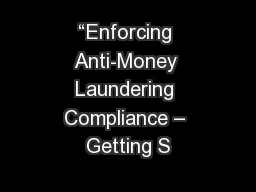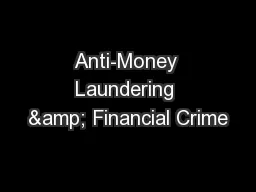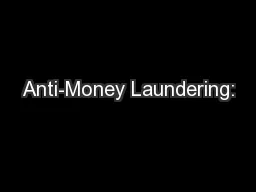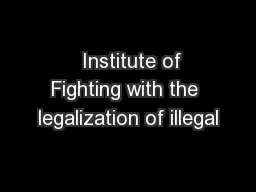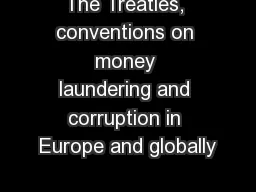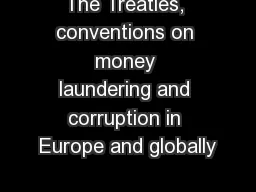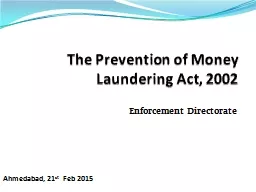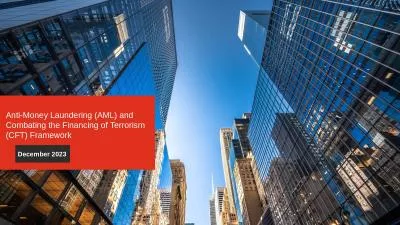PPT-Money Laundering :A practical approach to Detection & Prevention
Author : molly | Published Date : 2023-11-05
Esther Aikiriza Kagira Manager Strategic Analysis AND STATISTICS Financial Intelligence Authority UGANDA Structure of Presentation Role of Financial intelligence
Presentation Embed Code
Download Presentation
Download Presentation The PPT/PDF document "Money Laundering :A practical approach t..." is the property of its rightful owner. Permission is granted to download and print the materials on this website for personal, non-commercial use only, and to display it on your personal computer provided you do not modify the materials and that you retain all copyright notices contained in the materials. By downloading content from our website, you accept the terms of this agreement.
Money Laundering :A practical approach to Detection & Prevention: Transcript
Download Rules Of Document
"Money Laundering :A practical approach to Detection & Prevention"The content belongs to its owner. You may download and print it for personal use, without modification, and keep all copyright notices. By downloading, you agree to these terms.
Related Documents


